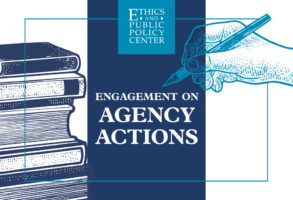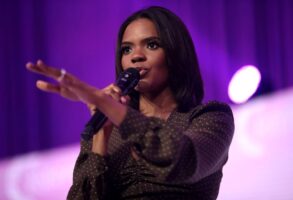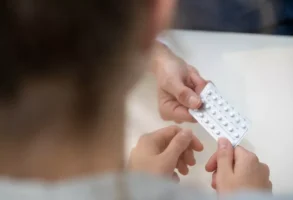
Published October 25, 2023
First Things
I’d get up at 4 a.m. and study Greek and Latin at the kitchen table, alone in my cube of light in the dead of winter. The big house in Cleveland Park was (at last) silent. The rages had subsided. The clarities of the languages, mostly the Greek (first Xenophon, then Homer), were as sweet as anything I have tasted since.
When it was time, I’d pack my schoolbooks and walk up Newark Street in the dark to the streetcar on Wisconsin Avenue and ride it down the long hill through Georgetown and then east on M Street and Pennsylvania Avenue until we arrived at Lafayette Square, where I changed to a crosstown bus. The White House would be pale and luminous in the cold blue dawn, the Eisenhowers just stirring in their beds, I supposed—lights coming on.
The bus took me out New York Avenue to a scruffier part of town, to North Capitol Street and the huge brick fortress of the Government Printing Office. There I got off. Gonzaga College High School and its impressive Church of St. Aloysius lay just to the north—its dark grandeur set down like a spaceship in a slum of rundown row houses in the old neighborhood called Swampoodle (once working-class Irish, now black). I made it in time for the 6:30 Mass in the lower church where, among the banks of flickering prayer candles, I and the others (black-clad local widows and widowers, mostly) took communion. Father Donahue could get through the Latin Mass (from “Introibo” to “Ite, missa est”) in twenty-three minutes.
I loved the Latin Mass. I loved the Jesuits at Gonzaga, too, although I would hardly have put it that way—may not even have been aware of my affection for them, my debt to them, at the time. I went to Gonzaga from 1954 to 1958. Whatever has happened in the years since then to change the Jesuits—some of the changes, in both the Jesuits and me, have been much for the worse—I remember those years with gratitude. I think of them as a kind of miracle.
Before Gonzaga, I went to a public school at the edge of Georgetown, Gordon Junior High. I was bored and miserable there; I learned nothing; I was nearly flunking. A priest who was a family friend—Monsignor George Higgins, well known later on as “the labor priest,” regarded by some conservatives as a socialist—took me in hand and prescribed Gonzaga. Boys from fancier or richer Catholic families—sons of diplomats or doctors—went to Washington’s other Jesuit school, Georgetown Prep, which had a leafy campus in Bethesda. Gonzaga was for the brainy sons of the lesser breeds. All seven of the Buchanan boys (including Pat)—and their father before them—went to Gonzaga. So did the Bennett brothers, Bill and Bob. The Buchanans were a notoriously smart and roughhouse clan, given to riding around on Friday nights in their father’s Oldsmobile station wagon, with a case of beer in the back. They’d cruise the parking lot of the Hot Shoppes on Connecticut Avenue and look for fights with boys from other parishes. Now and then, they’d wreck the Oldsmobile.
I’d only recently become a Catholic. (That was a long story.) At first, I felt like an exile in the strange new culture—or rather in the strange old culture, whose secrets and customs I could not penetrate. The Jesuits eyed me quizzically—they knew that I was a recent convert to the faith (what was that all about?); a few of them (I could see the light in their eye) thought I might eventually make a Jesuit myself. Above all—thank God—the priests and scholastics scared me to death. They were a tough breed, the old school, “God’s Marines.” The prefect of discipline, Father Aloysius P. McGonigal S.J.—a fireplug of a man who worked out with weights, whose biceps bulged beneath his cassock—had been known to strip off his Roman collar and take some hulking, smart ass boy out back to the handball court and beat him up in a fair fight. Father McGonigal eventually became an Army chaplain in Vietnam and died while carrying an M-16 in a Marine assault on a North Vietnamese position in the imperial city of Hue. Years later, I took a rubbing of his name from the wall of the Vietnam Memorial and pinned it above my desk.
I studied hard, got near perfect grades, joined the Sodality of Our Lady, and by the time that May, the month of Mary, came around in my sophomore year, I was leading the student body in reciting the Rosary—I, standing on the fire escape outside the auditorium (like the pope on his balcony) and all the other boys down below in the parking lot, lined up in squads and battalions and calling out the Hail Mary’s at my prompting.
The gift that the Jesuits gave me was a strong, stable, coherent intellectual and spiritual context—the disciplines of the Church itself at that time, with Jesuit admixtures: high standards and a ruthless, unfoolable, aggressive objectivity. And religious faith. Objectivity plus faith: a handsome paradox.
Gonzaga was not Georgetown Prep; it had a working-class credibility. We were smarter than the jerks at Georgetown Prep. We could take a punch. The place proved to be a miracle for me, as I have said: what I had before I went there was incoherence that promised failure down the road. I was a messed-up kid, with five brothers and sisters, from what was rapidly becoming a madhouse alcoholic home.
I have been appalled and saddened—and incredulous—to hear stories about the Jesuits of more recent years. When I have spoken in a sentimental or nostalgic way about them, remembering Gonzaga in the 1950s, friends with more immediate knowledge have shaken their heads, as if to say, “That was a long time ago.” There are a hundred anecdotes about gay culture in the Society of Jesus, for example. I won’t repeat them. They are not the whole story, of course, but what a stupid, miserable business, even so.
In my years at Gonzaga, by the way, I never saw evidence of that kind of thing among the Jesuits, such was their discipline. I never picked up a hint of abuse, even of the lightest flirtation with the subject. It wasn’t there. Or if it was, it was buried so deeply—suppressed so thoroughly—that it never touched the students. I would have heard about it, I think. There was one French teacher, it is true—a layman—who was so effeminate in his manner that my classmates, the rougher, Studs Lonigan types, drove him to tears, and out the door, before the fall semester ended.
America was a different country, sixty or seventy years ago. Was it a better world? Was it a better Church? They are questions worth discussing.
I went on from Gonzaga to Harvard. (Recklessly, I had applied only to Harvard and if I had not been admitted there, I would have been out of luck.) The Jesuits were proud I’d gotten into Harvard, but they predicted that, once there, I would drift away from the Church. They were right. It would be many years before I drifted back.
I confess that something like the Synod on Synodality baffles me—is beyond me. Spiritually speaking, my soul is still back in an earlier time, where I was happy, in the lower church of St. Aloysius Gonzaga, just after the winter sunrise, with Father Donahue racing through the Latin.
Lance Morrow is the Henry Grunwald Senior Fellow at the Ethics and Public Policy Center. His work focuses on the moral and ethical dimensions of public events, including developments in regard to freedom of speech, freedom of thought, and political correctness on American campuses, with a view to the future consequences of such suppressions.












